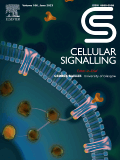
“The endocannabinoid system mainly consists of endogenously produced cannabinoids (endocannabinoids) and two G protein-coupled receptors (GPCRs), cannabinoid receptors 1 and 2 (CB1 and CB2). This system also includes enzymes responsible for the synthesis and degradation of endocannabinoids and molecules required for the uptake and transport of endocannabinoids. In addition, endocannabinoid-related lipid mediators and other putative endocannabinoid receptors, such as transient receptor potential channels and other GPCRs have been identified. Accumulating evidence indicates that the endocannabinoid system is a key modulator of gastrointestinal physiology, influencing satiety, emesis, immune function, mucosal integrity, motility, secretion, and visceral sensation. In light of therapeutic benefits of herbal and synthetic cannabinoids, the vast potential of the endocannabinoid system for the treatment of gastrointestinal diseases has been demonstrated. This review focuses on the role of the endocannabinoid system in gut homeostasis and in the pathogenesis of intestinal disorders associated with intestinal motility, inflammation and cancer. Finally, links between gut microorganisms and the endocannabinoid system are briefly discussed.”








